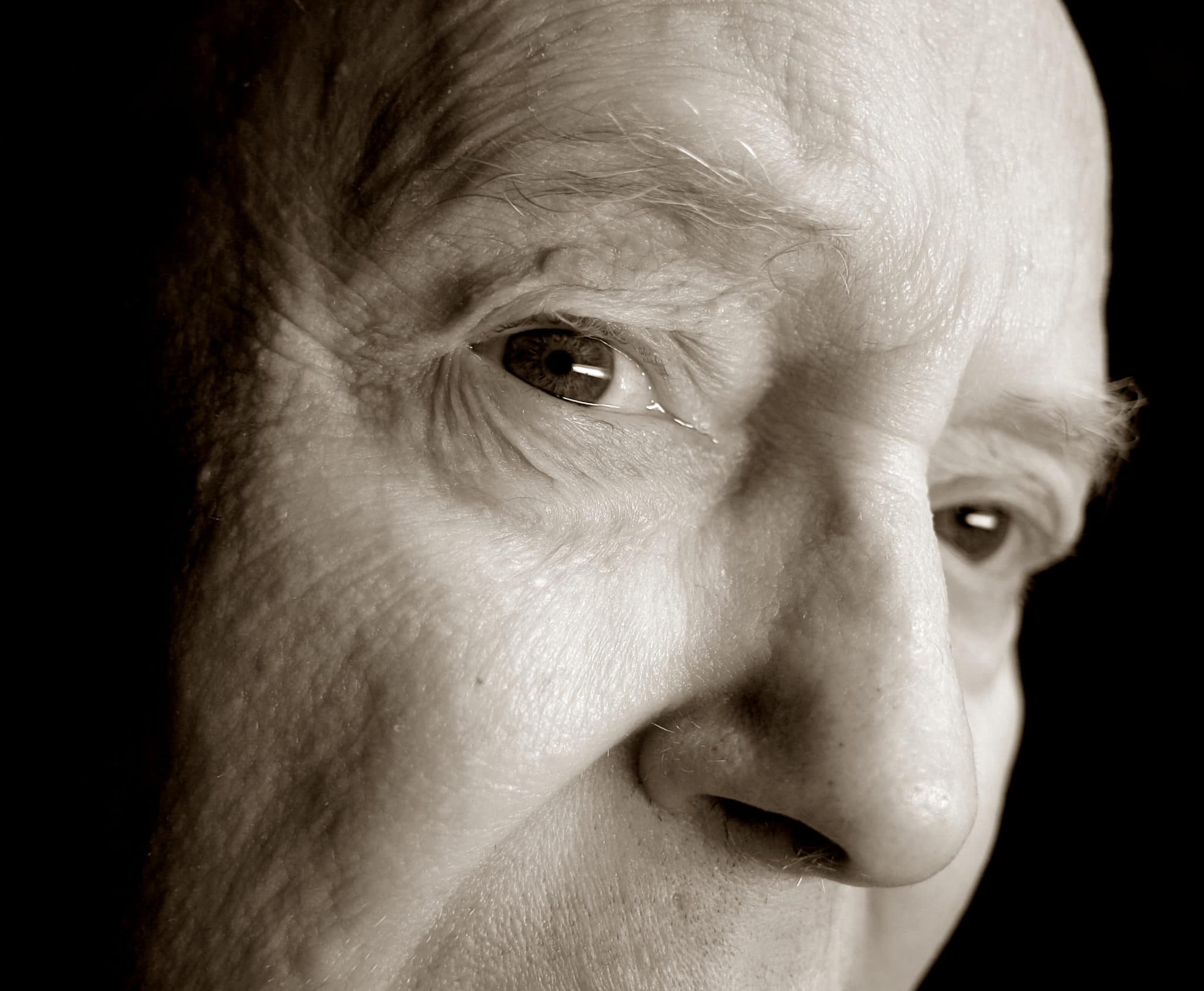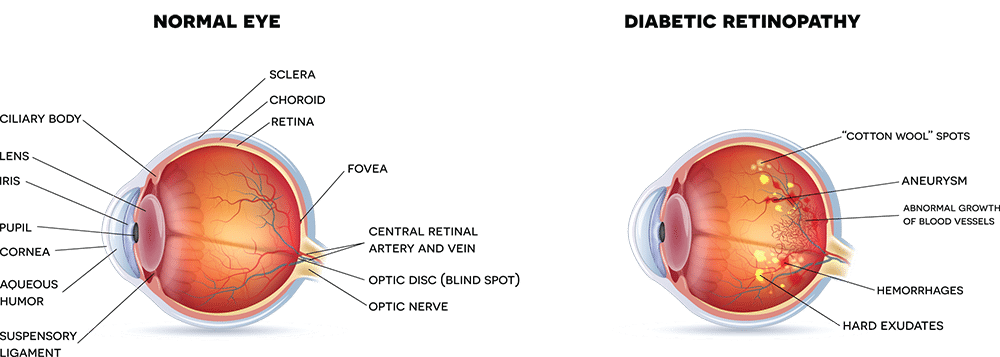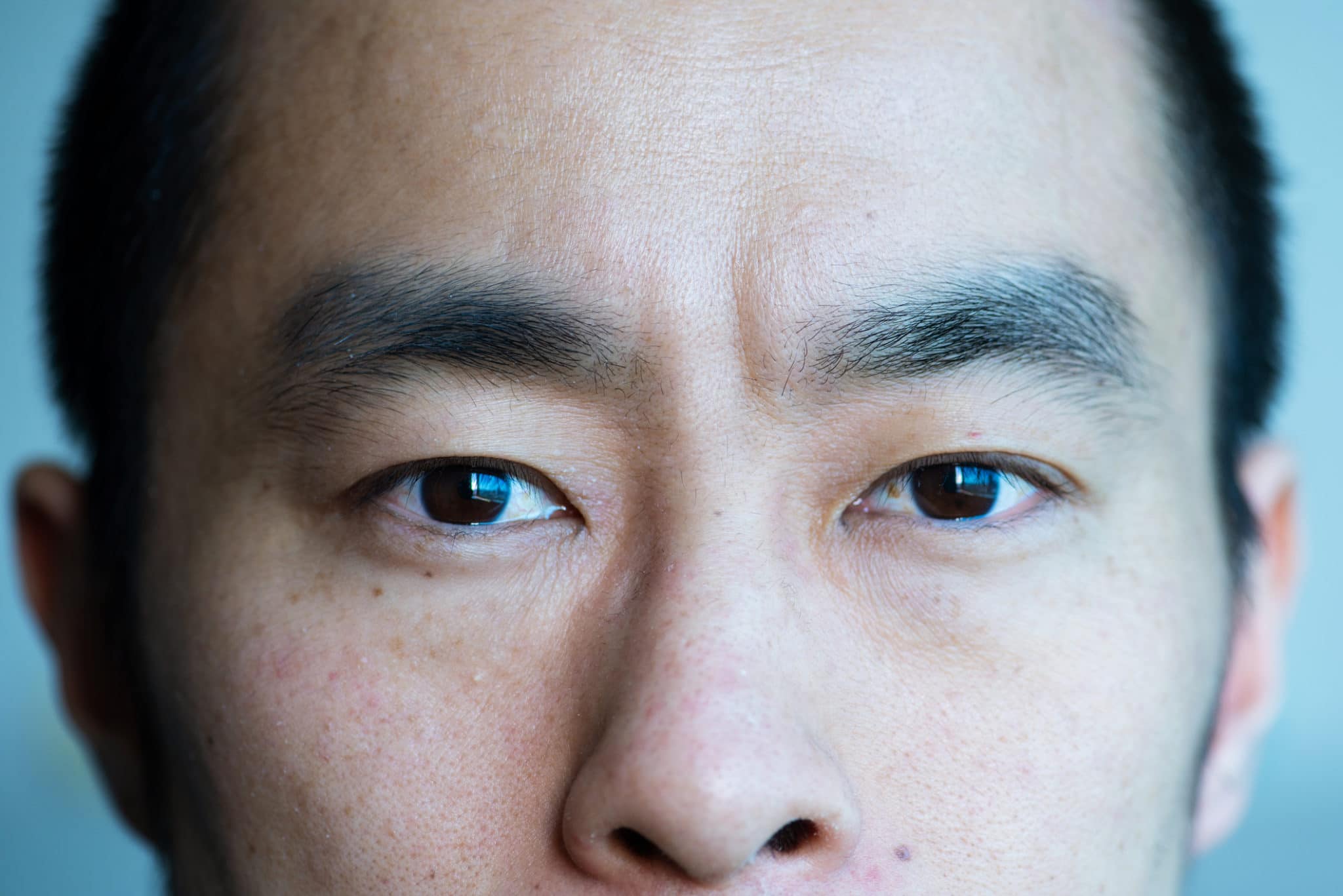Diabetic Eye Care: Eye Doctor Portland OR
How common are diabetic eye conditions?
The eye conditions that diabetic patients may face include diabetic retinopathy, glaucoma, and cataracts. Diabetic retinopathy develops in approximately 1 in 3 adults with diabetes. This is the most common cause of vision loss among diabetic people. However, with appropriate care, the risk of vision loss can be reduced up to 95 percent. Studies indicate that people with diabetes are twice as likely as non-diabetics to develop glaucoma or cataracts.
 What kind of Diabetic Eye Conditions exist?
What kind of Diabetic Eye Conditions exist?
Diabetic eye disease describes a group of conditions that are particularly common among people with diabetes. These conditions include:
Diabetic Retinopathy
The retina is a piece of light-sensitive tissue at the back of the eye. It senses light and delivers signals to the brain for decoding. Diabetic retinopathy involves the weakening and swelling of the blood vessels near the retina.
Diabetic Macular Edema
The macula is a small piece of tissue at the center of the retina. It is in play when we drive, read, and observe people’s faces. Diabetes can result in swelling in this piece of tissue which can, over time, degrade sharp central vision.
Cataracts
Cataracts are a common eye condition that result in cloudy vision that worsens over time. Clouding is caused by a buildup of tiny proteins on the lens of the eye. Cataracts can develop in one or both eyes. While all people have some degree of risk of cataracts, studies indicate that people with diabetes may develop this condition earlier in life.
Glaucoma
Glaucoma is a potentially serious eye disease that involves excessive pressure in the eye. Called intraocular pressure, this force is necessary to stabilize the structures of the eyes. However, too much pressure in the eye compresses the optic nerve and can cause irreparable damage. If not treated early enough, glaucoma can result in blindness.
How Does Diabetes Affect Vision?
Diabetes affects vision by having chronically high blood sugar levels, this can affect your long-term eye health in several ways. Sometimes, the mere presence of too much glucose in the blood can cause minor swelling in the lens of the eye, resulting in blurriness. Diabetes also increases the risk of developing glaucoma and cataracts. These conditions may occur in many adults, but studies indicate that they are more common among people with diabetes. Finally, diabetics have a relatively high risk of developing retinopathy. When associated with elevated blood sugar, this condition is referred to as diabetic retinopathy. It occurs due to weakness in the tiny blood vessels of the eye. This weakness can cause minor leaks of fluid into the back of the eye. In more severe cases, abnormal blood vessel growth occurs, increasing the leakage that can then damage the retina.
How is it Diagnosed?
Diabetes is diagnosed through a blood test that measures the amount of glucose that is in the blood. The most common test for diabetes is the A1C, which measures glucose levels over the previous three months. Diabetic eye disease, on the other hand, is diagnosed through comprehensive eye exams and tests that observe various ocular structures. For example, an ophthalmologist may diagnose diabetic retinopathy by observing the back of the eye using a special instrument. This painless test is performed when the pupils are dilated, widening the view to the retina and surrounding tissue. Various other tests performed during a routine eye exam can measure intraocular pressure to screen for glaucoma and visual observation of the cornea, lens, and other tissue.
How Often Should a Diabetic Have a Complete Eye Exam?
If you have diabetes, your ophthalmologist may recommend that you schedule visits every year or two. The frequency of your eye exams will also relate to your overall health and the findings from your last eye exam.
What Eye Symptoms in a Diabetic Should Cause Concern?
Even seemingly benign symptoms like blurriness should prompt you to schedule an eye exam if you have diabetes. Other symptoms that could indicate unwanted changes in your eyes include:
- Changes in your peripheral (side) vision
- A decrease in your night vision
- Seeing floaters or flashes
- Seeing double
- Frequent pressure in the eyes
Why do People Lose Vision from Diabetic Retinopathy?
Diabetic retinopathy involves the leakage of fluid into the small piece of light-sensitive tissue at the back of the eye. The retina is responsible for delivering light signals to the optic nerve, which progresses those signals to the brain. When there is excess fluid on and around the retina, the very central piece of tissue, the macula, can swell. This is referred to as macular edema and is the most common cause of blindness in people with diabetic retinopathy. Vision may also become completely blocked if, due to proliferative diabetic retinopathy, the central chamber of the eye, which sits in front of the retina, becomes filled with blood and fluid from abnormal blood vessels.
What Other Problems can Diabetic Retinopathy Cause?
Vision loss is our primary concern for people with diabetic retinopathy. However, the early signs of this condition, including a sense of pressure in the eyes or persistently blurry vision, can have a significant impact on daily activities and quality of life. With appropriate care, these symptoms can be brought under control with medication, lifestyle changes, or conservative interventions by your eye doctor.
What are the Symptoms Of Diabetic Eye Conditions?
Diabetic eye conditions often develop without any noticeable vision loss or pain, so significant damage may already be done to the eye by the time patients notice any symptoms. For this reason, it is important for diabetic patients to have their eyes examined at least once a year. Early detection of eye disease can help prevent permanent damage.
How can you know if diabetes is the cause of my eye condition?
If you have diabetes, you are at risk for diabetic eye disease. You should see an ophthalmologist every year for a comprehensive, dilated exam. During visits, the eye doctor observes the eye through dilated pupils so they can see to the back of the eye using a magnifying lens. In addition to looking at the retina, macula, optic nerve, and blood vessels of the eyes, the doctor measures pressure in the eye to screen for glaucoma.
What Causes Diabetic-Related Eye Conditions?
Diabetic-related eye problems develop from high blood sugar levels, which can cause damage to blood vessels in the eye. Over 40 percent of diabetic patients will develop some form of eye disease in their life. The risk of developing eye problems can be reduced through regular eye exams and by keeping blood sugar levels under control through a healthy diet and regular exercise.
Who is at risk for developing diabetic eye conditions?

Is eye damage from diabetes reversible?
Eye damage may be reversible in some instances but not in every case. It depends on the way that diabetes has affected the eye. For example, if a diabetic person experiences poor vision because they have developed cataracts, then cataract-removal surgery can improve eyesight. If diabetic retinopathy has damaged many blood vessels in the back of the eye, vision loss may not be correctable. It is very important to see an eye doctor regularly if you have diabetes and to schedule a comprehensive consultation and eye examination if you experience changes in vision.
Who is a good candidate for treatment?

What Is Diabetic Retinopathy?
Diabetic retinopathy is the most common type of diabetic eye disease and the leading cause of blindness in the US. This condition is caused by blood vessel changes within the retina that lead to swelling and leaking of fluid. It can also cause the growth of abnormal new blood vessels on the surface of the retina. There are four stages of diabetic retinopathy that begin with the occurrence of microaneurysms and eventually lead to abnormal blood vessels on the surface of the retina that can easily leak fluid and cause severe vision loss and even blindness.
The fluid can also leak into the center of the macula and cause swelling and blurred vision, a condition known as macular edema. The risk of developing macular edema increases as diabetic retinopathy progresses.
How Can Diabetic Eye Problems Be Treated?
Treatment for early stages of diabetic retinopathy and other conditions usually focuses on maintaining levels of blood sugar, blood pressure, and blood cholesterol, in order to prevent any permanent damage from occurring. For more advanced stages of the condition, laser surgery is often effective in shrinking the abnormal blood vessels through over 1,000 laser burns in the area of the retina. This procedure, known as scatter laser treatment, usually requires two or more sessions in order to fully remove the blood vessels.
Macular edema can also be treated through a laser procedure, called focal laser treatment, which places hundreds of laser burns in the area of retinal leakage to reduce the amount of fluid in the retina. This treatment only requires one treatment.
What happens if diabetic retinopathy is left untreated?
Diabetic retinopathy is a potentially serious eye disease that can cause irreparable damage to the eye’s retina. The small blood vessels that keep the retina healthy become blocked when the blood sugar level is either too high or too low for an extended period. To make up for damaged blood vessels, the body will make new blood vessels. The new vessels that develop are weak and fragile. These vessels leak fluid and blood into the eye, which accumulates at the center of the retina in a tissue called the macula and causes swelling. This condition is referred to as macular edema. The process of blood vessel damage often leads to a buildup of scar tissue on or around the retina. Scar tissue can cause the retina to detach from the back of the eye, an event that could lead to blindness.
How long does it take to go blind from diabetic eye conditions?
Most forms of diabetic eye disease cause gradual damage. It can take years to lose eyesight from a condition like diabetic retinopathy. However, the damage that occurs to the eyes is often irreversible. For this reason, it is crucial that the diabetic patient receive regular dilated eye exams.
How can I prevent diabetic eye conditions?
The best strategy that diabetic patients can implement to protect their eyes is to manage their general health. Remember, it’s not just blood sugar that plays a role in the risks of eye diseases. Diabetics should manage their ABC’s, including their A1c blood sugar tests, blood pressure, and cholesterol. Additionally, diabetics should avoid smoking. Dilated eye exams should be performed at least once a year. This allows the ophthalmologist to evaluate the health of all ocular structures, including tiny blood vessels, the retina, and the optic nerve.
What foods should I eat to prevent diabetic eye conditions?
If you have diabetes, it is important to develop a healthy diet that will promote blood sugar regulation. Additionally, your diet should include foods that contain vitamin A and carotenoids such as lutein and beta-carotene. Vitamins C and E, zinc, and selenium are also important nutrients for healthy eyes.
- Vitamin A and beta-carotene are found in foods like eggs, fish, leafy greens, cantaloupe, pumpkin, sweet potato, and carrots.
- Lutein is found in leafy greens like spinach, collards, and kale, as well as in corn, peas, and eggs.
- Vitamin C is found in oranges, kiwi, strawberries, papaya, cabbage, broccoli, and sweet peppers.
- Vitamin E is found in pumpkin seeds, wheat germ, seafood, and lean meat.
- Selenium is found in seafood and fish and nuts and seeds.
 How long does it take to see results from diabetic eye treatments?
How long does it take to see results from diabetic eye treatments?
Diabetic eye treatments begin working right away. However, the effects of treatment may not be immediately noticeable. For example, if you have diabetic retinopathy and are prescribed medication, the objective is not to improve vision but to reduce the amount of fluid on the retina. By reducing fluid, treatment can slow the progression of damage at the back of the eye. Other treatments, such as cataract removal, achieve rapid improvement in vision. Depending on the type of eye condition you have, your doctor can discuss what to expect in terms of results and recovery.
Click here for additional information on Diabetic Eye Care »
Schedule a Consultation Today!
We offer diabetic eye care in Portland, OR. If you have diabetes and are seeking treatment options, contact the Eye Clinic P.C. by calling 503.297.4718 to schedule a consultation with one of our providers today, or fill out our form below.


 What kind of Diabetic Eye Conditions exist?
What kind of Diabetic Eye Conditions exist?
 How long does it take to see results from diabetic eye treatments?
How long does it take to see results from diabetic eye treatments?